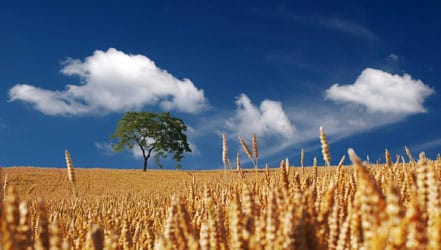Did you ever wonder why grains received top-billing (or would it be bottom-billing?) in the USDA’s food pyramid? Pure and simply, grains are great foods. Grains are also the world’s most plentiful food and enjoy first place in the diet of nearly every culture, except perhaps fish-loving Eskimos. What makes grains so good? Around two-thirds […]
- Home
- Topics (Page 71)
Reading Bread Labels
In comparing bread ingredient labels, use the same judgment tip we mentioned in comparing yogurt labels: the shorter the ingredient list, the better the bread. The most nutritious bread may be made from only whole wheat flour, water, yeast, and salt, with possibly a touch of molasses and honey, or the addition of other “whole” […]
Bread Basics: Ranking Breads
No matter how you slice it, whole wheat bread is more nutritious than white because whole wheat bread contains the following: nearly one-third more protein three to four times the amount of fiber four times more zinc more folic acid more iron more chromium (an important mineral which regulates sugar and fat metabolism, especially important […]
Oats
Next to wheat, oats are the most popular grain found in breads and cereal, such as granola and muesli. While oats are nutritionally similar to whole wheat, the oat kernel has not been taken apart like the unfortunate wheat, so oats are often nutritionally superior to some forms of wheat. If you see the word […]
Barley
Barley is a popular grain in cereals and, because its easily digested, is used as an alternative to rice in baby cereals. Yet, because barley does contain some gluten, it is a less intestinal-friendly cereal for gluten-sensitive children and adults. Unfortunately, most Americans get most of their barley in beer, since barley malt is a […]
Buckwheat
Despite it’s name, buckwheat is neither a wheat nor a grain. Botanically a fruit, this favorite pancake-ingredient got its name from the Dutch word bockweit. Buckwheat enjoys a few nutritional perks over wheat: it is much higher in the amino acid lysine, somewhat higher in vitamin E, and is much lower in gluten, an important […]
Amaranth
Botanically, amaranth is not really a grain, but it has the nutritional profile of one. It surpasses whole wheat in calories, protein, iron, zinc, copper, and nearly all nutrients, and is the grain highest in folic acid, calcium, and vitamin E. Also, like wheat, amaranth is rich in the amino acid lysine. It even contains […]
Quinoa
Like amaranth, quinoa (pronounced keen-wa) is botanically not a grain, yet it has the nutritional profile of a grain and similar uses. It ranks along with amaranth as a “super grain.” It is higher than other grains in protein and iron, folic acid, and some B-vitamins. Yet, it is deficient in the amino acids, tyrosine […]
Millet
A popular grain in Asian and Middle Eastern flatbreads, millet is lower than wheat in fiber, but a rich source of B-vitamins and trace metals. Because it’s gluten-free, it isn’t used as the main grain in leavened breads. It can be used in its raw state as a healthy addition to some wheat breads, where […]
Rice
Rice enjoys a popularity similar to wheat. In Asia, it’s the main grain. It is much less nutrient dense than wheat, being lower in protein, fiber, iron, folic acid, calcium, zinc, vitamin E, and B- vitamins. Rice’s claim to fame is that it contains the most carbohydrates, which makes rice a popular energy food in […]
Rye
Rye flour contains twice as much fiber, iron, zinc, vitamin E, B-vitamins, and calcium as whole wheat flour. The amino acid profile of rye flour is also better than whole wheat. Does that make rye bread better for you than whole wheat? Not exactly, for two reasons. In its original form, or dark variety, rye […]
Top Ten Fruits
How you rank fruit depends upon the reason you’re eating the fruit and your individual tastes. The four most valuable nutrients in fruits are fiber, vitamin C, carotenoids (e.g. beta carotene), and phytonutrients (health-building substances). Here are our rankings – an overall “Top Ten Fruits” list and our top choices for fiber and vitamin C. […]

